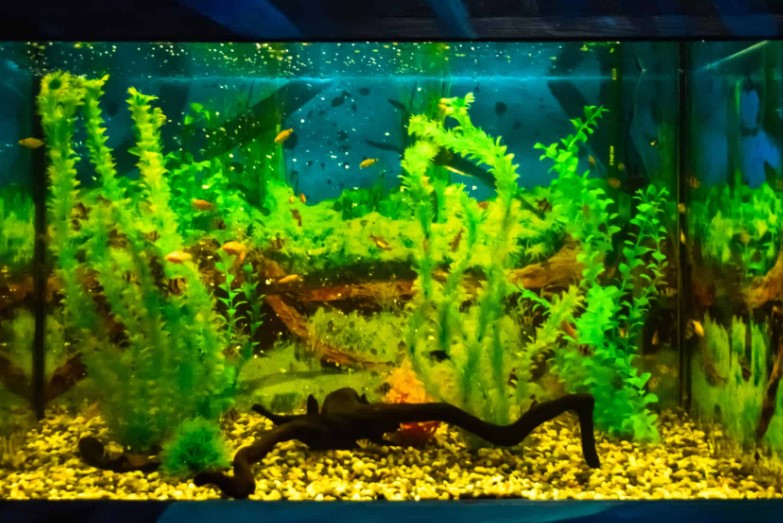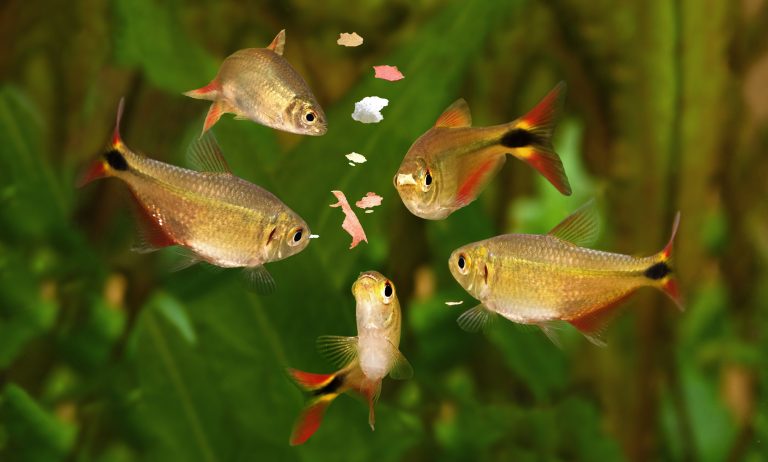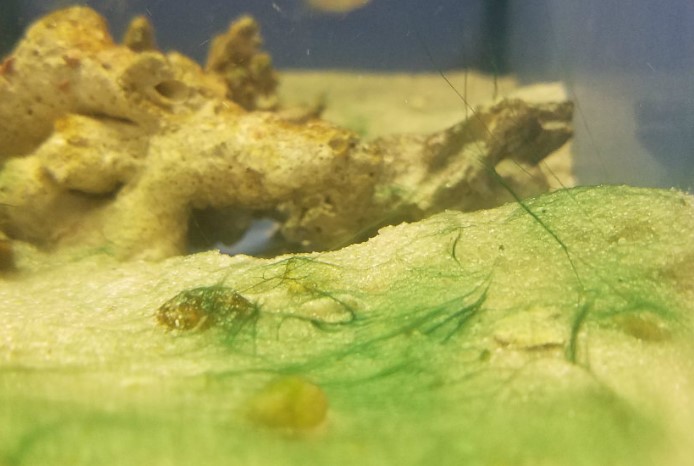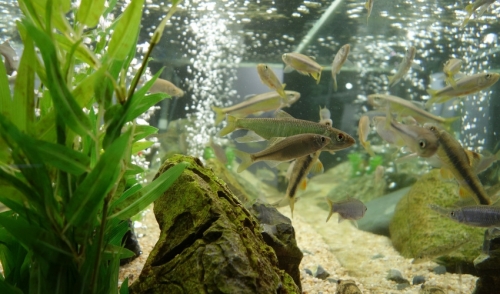Is Your Tank Ready? Learn How to Know Before Adding Fish
To know if your tank is ready for fish, test the water parameters and ensure they are appropriate for the type of fish you want to keep. Now, introducing fish to your tank can be exciting, but it’s crucial to make sure your tank is ready to accommodate them.
Ensuring your aquarium is the perfect environment for your fish can be time-consuming, but it’s critical for their health and happiness. Overcrowding and water chemistry issues can be fatal for fish. So how do you know if your tank is ready?
Here is your ultimate guide to determine if your tank can support fish and ensure your fish will thrive in their new aquatic home.

Credit: www.amazon.com
Water Chemistry: The Foundation Of A Healthy Tank
Understanding The Importance Of Water Quality In Your Tank
The quality of water in a fish tank is a critical factor for the survival and well-being of the fish. If the water is contaminated or has the wrong chemical composition, it can lead to serious problems for your fish, including death.
How To Test And Monitor The Key Parameters Of Water Chemistry
Fortunately, testing the water quality is simple and inexpensive. You can use a test kit to monitor several parameters, including ph, ammonia, nitrites, and nitrates levels. Testing frequency should be at least once a week, and more often during the tank’s cycling phase.
What Are The Optimal Levels Of Ph, Ammonia, Nitrites, And Nitrates For Fish To Thrive?
Fish have different tolerance levels for various chemical compounds in the water. The optimal level of ph is between 6. 5 to 7. 5, while the ideal range for ammonia and nitrites is zero. The safe limit for nitrate is less than 20 ppm, although some species can handle slightly higher concentrations.
Common Problems That Arise From Poor Water Conditions And How To Prevent Them
Poor water quality can cause several issues like fin rot, fungal infections, and other diseases. Some of the primary reasons for deteriorating water quality include overfeeding or overstocking, insufficient filtration, and skipping water changes. You can prevent these problems by testing the water regularly, performing partial water changes weekly, using quality filtration, and acclimating new fish slowly.
Maintaining water chemistry is a crucial aspect of keeping a healthy and thriving fish tank. By testing and monitoring the key parameters frequently, you can identify and correct any potential issues promptly and ensure the well-being of your fish.
Biological And Mechanical Filtration: The Engine Of Your Aquarium
Every aquarium enthusiast craves a healthy and thriving ecosystem for their underwater friends. However, some novice aquarists are not familiar with the crucial role filtration systems play in accomplishing this goal. Without them, fish waste and other organic debris can accumulate and end up poisoning your marine life.
To avoid this, it is crucial to learn more about biological and mechanical filtration systems, how to choose the right one, set it up, and maintain it for optimal performance, and how to tackle common problems.
The Role Of Filtration In Maintaining A Healthy Tank Ecosystem.
A clean and healthy aquatic environment leads to happy and healthy fish. But a fish tank is not a self-sustaining ecosystem, and fish waste, leftover food, and other organic matter can quickly pollute the water. The job of filtration systems is to remove these unwanted elements and to cultivate beneficial bacteria, which is vital for the growth and health of marine organisms.
Choosing The Right Type Of Filter For Your Tank Size And Fish Species.
There are various types of filtration systems, including hang-on-back (hob) filters, canister filters, and sponge filters. When selecting a filter for your tank, consider the size and type of fish you have, the bioload, and the tank size. Some filters are compatible with small tanks, while others are more suited for larger ones.
Learn about the different filtration options and consult with an expert if necessary to make an informed decision.
Setting Up And Maintaining Your Filter For Optimal Performance.
A properly installed filter promotes a healthy aquatic environment. Carefully read the manufacturer’s instructions and follow them closely when setting up the filtration system. Check the filter regularly, clean it when necessary, and replace the filter media every three to six months.
Remember, filters require a break-in period, so expect to see some particulate buildup for a few weeks. Lastly, maintain a regular water change schedule.
Troubleshooting Common Filter Problems And How To Fix Them.
Even with proper maintenance, issues may arise with your filter. Some of the most common problems aquarium enthusiasts face include clogging, leaks, and loss of suction. If you encounter problems, refer to the user manual, check the filter for mechanical damage, and clean it thoroughly.
Additionally, ensure that your filter is adequate for your tank’s bioload and size and that the hoses are correctly installed and free from kinks.
Filtration systems are essential components for a thriving and healthy aquarium. By understanding the different filtration options available, and how to set them up and maintain them, your tank ecosystem will flourish. With a well-maintained filtration system, you can enjoy a beautiful and healthy underwater world for years to come.
Choosing The Right Fish: Compatibility, Temperament And Size
Understanding The Unique Needs And Requirements Of Different Fish Species
Different fish species have unique needs and requirements that must be met for them to thrive in your tank. Some fish require specific water conditions, while others need particular diets or habitat features. It is important to research the species you are interested in and ensure that they are compatible with your tank setup and other fish that you may already have.
How To Select Fish That Are Compatible With Each Other And With Your Tank Conditions
When selecting fish for your tank, consider their compatibility with each other and with your tank conditions. Choose fish that have similar water temperature, ph level, and water hardness requirements. Additionally, certain fish species have aggressive tendencies and may not be suitable for life in a community tank.
Research the types of fish that can coexist peacefully and avoid mixing those that may cause conflict.
Factors To Consider When Choosing Fish Based On Temperament, Size And Activity Level
Fish temperament, size, and activity level should be taken into consideration when planning your tank’s occupants. Some fish are naturally more active than others and require plenty of space to swim and explore, while others are more docile and may prefer to hide in caves or plants.
Ensure that you choose fish that are proportionate in size to your tank to prevent overcrowding and maintain healthy living conditions. Finally, be aware of how the different fish in your tank are likely to interact and avoid introducing species that may clash.
Why A Crowded Tank Can Be Harmful To Your Fish And How To Avoid It
Overcrowding your tank can cause stress, lower water quality, and lead to disease and death amongst your fish. It is important to avoid filling your tank to capacity, and instead, stick to a recommended stocking level based on your tank’s size and filtration system.
Monitoring water quality and performing routine maintenance on your tank can help prevent overcrowding and ensure the health and wellbeing of your fish.
Acclimation: Helping Your Fish Adapt To Their New Home
The Importance Of Gradual Acclimation To Prevent Shock And Stress In New Fish
Bringing home new fish can be an exciting experience, but it’s essential to acclimate them gradually to prevent shock and stress that can lead to illness or death. Rapid changes in water chemistry and temperature can cause a great deal of discomfort to fish, so it’s crucial to give them time to adjust.
- Gradual acclimation helps fish settle into their new environment more comfortably without experiencing unnecessary stress or shock.
- Fish should be allowed to acclimate for at least an hour to adjust to a new environment successfully.
How To Acclimate Your Fish By Controlling Water Temperature, Ph, And Introducing Them To Their New Environment Slowly
The process of acclimating your fish can be done by controlling the water temperature, checking the ph levels, and introducing them to their new environment slowly.
- The ph level of the water should be checked before acclimating fish to ensure that the water is within the recommended range for the species of fish you plan to keep.
- Gradually add small amounts of water from your tank to the bag containing the fish to adjust the temperature.
- Introduce the fish to their new environment by floating the bag in the aquarium to slowly adjust the water temperature and ph levels.
Techniques For Minimizing Stress During The Acclimation Process
Fish are sensitive creatures, and even small changes in their environment can cause stress. Follow these techniques to minimize stress during the acclimation process.
- Dim the aquarium lights to reduce the brightness, which can reduce fish stress levels.
- Cover the aquarium with a towel to reduce excess light and noise.
- It is recommended to add aquarium plants and other decorations to the tank before introducing the new fish, providing a safe environment for your fish.
Monitoring And Troubleshooting Potential Problems That May Arise In The Acclimation Process
During the acclimation process, it’s essential to monitor your new fish to identify any potential problems. Suppose you encounter any issues; you should troubleshoot them immediately.
- Watch for any signs of stress, illness, or disease, such as clamped fins, rapid breathing, or other irregular behavior.
- Test the water quality regularly for the first few weeks after introducing new fish and make necessary adjustments to maintain optimal water quality.
- Consult with a professional or local fish store for expert advice on how to minimize stress and prevent potential problems that may arise in the acclimation process.
Frequently Asked Questions On How To Know If Your Tank Is Ready For Fish
How Many Fish Can I Have In My Tank?
It depends on the size of the tank. As a general rule, you should have one inch of fish per gallon of water. However, it’s important to also consider the species of fish you plan to keep and their individual needs.
When Can I Add Fish To My New Tank?
It’s important to wait until the nitrogen cycle in your tank stabilizes before adding fish. This usually takes 4-6 weeks. You can monitor the cycle with a test kit. Once the levels stabilize, start with a few hardy fish before adding more.
How Often Should I Clean My Fish Tank?
You should clean your tank once a week. This includes a partial water change, wiping down the inside of the tank and any decor, and vacuuming the gravel. However, be careful not to clean too much or too often to avoid disrupting the nitrogen cycle.
Conclusion
After reading this guide, you should now have a clear understanding of how to know if your tank is ready for fish. Always start with the basics: ensuring your tank is adequately cycled and the water parameters are within the acceptable range for your desired fish species.
Then, consider factors such as tank size, filtration, and decoration before adding any fish. It’s crucial to research the specific needs and behaviors of your chosen fish to create an ideal environment for them to thrive in. Don’t rush the process, and always remember to introduce new fish slowly and monitor their behavior closely.
By following these guidelines, you can provide a healthy and happy home for your aquatic friends. Happy fishkeeping!






